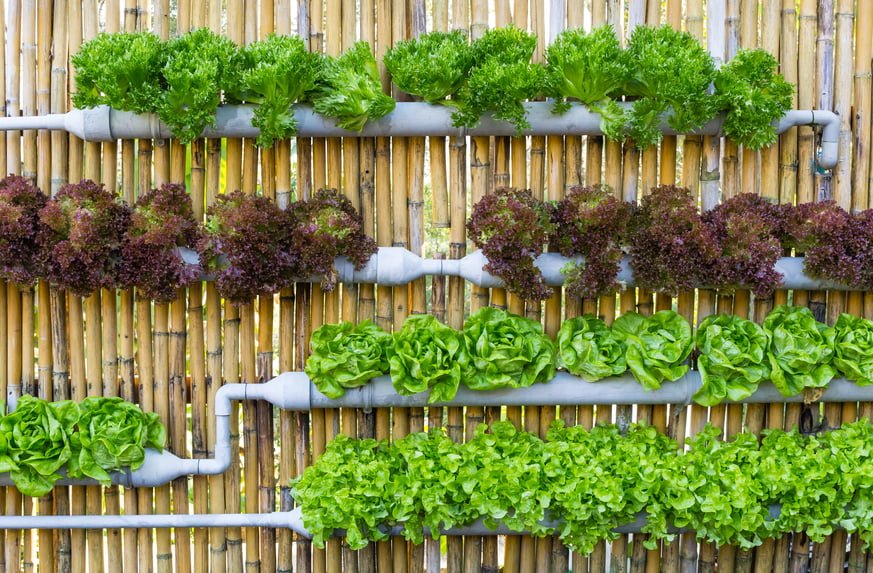
Small yards are no problem for vertical gardening fans. In fact, the unofficial mantra of vertical gardeners is, “No yard? No problem!” Spatial limitations aside, the appeal of vertical gardening extends well beyond the practical in Northern Utah. Living walls and other vertical designs can improve air quality, soothe a harried atmosphere or add a dramatic design element. You don’t need to be an engineer or handyman to build your own vertical garden. Check out these simple tips and tricks for becoming a vertical gardener yourself.
Living Walls
The term “living wall” can be used for a variety of vertical planting applications, both indoors and out. Living or green walls can be built using any existing wall surface, trellis or railing, but freestanding versions are also relatively easy to construct. Although some manufacturers offer prefabricated systems, many vertical gardeners prefer to design and build their own. Living walls can be any size, from tabletop to the side of a barn. Repurpose wood pallets, wall-mount office mail sorter pockets, or simply attach mason jars to a plank of reclaimed wood. Use window screen fabric or wire mesh to hold in plants and soil when necessary. Hundreds of DIY patterns are available online, should you need inspiration or how-to specifics.
Vertical Gardening for Fruits and Vegetables
Using a vertical planting configuration for fruits and vegetables can dramatically improve both quality and quantity of yield. Vertical vegetable gardeners swear their gardens need less water, less fertilizer and even less work. Perpendicular gardens are significantly more avoidant of disease, pests and weeds. Plants enjoy greater air circulation, less chance of root rot and fewer soil-specific maladies. You can use a traditional trellis; however, wire and netting materials work perfectly for vining plants. For fruits, herbs and non-vining vegetables, select any type of container that appeals to you, as long as it can be hung, attached or suspended above the ground.
Combining Vertical and Horizontal Gardens
Create amazing visual interest by mixing vertical and horizontal growing surfaces in your garden. This application is perfect if you have a small yard or simply hope to maximize space. Add trellises or other support surfaces to your existing garden. Use them both for vining plants and to hang creative planting containers. Old picture frames or window shutters can work for this purpose, or even cut sections of rain gutters, with caps attached to the ends. Simply drill drainage holes if your container doesn’t already have them.
Vertical gardening options are limited only by your imagination. Visit your local garden center for supplies and professional advice on plants, soil and fertilizers. In the Salt Lake City area, Millcreek Gardens has everything you need, including an experienced, professional staff to help with your selections. Let Millcreek Gardens help you get started in the exciting world of vertical gardening today.


